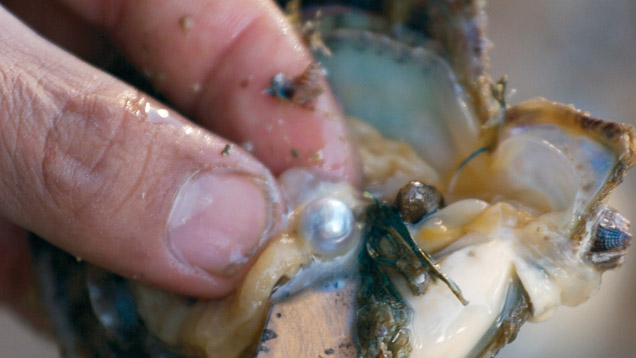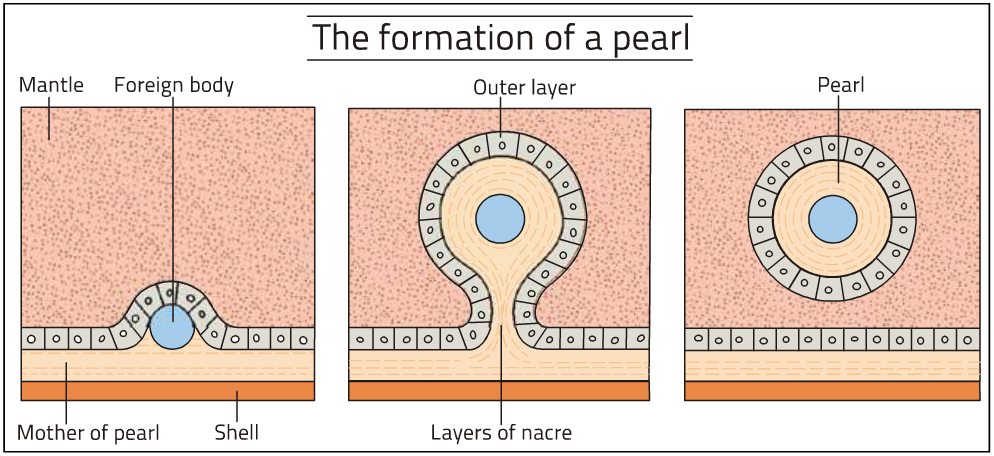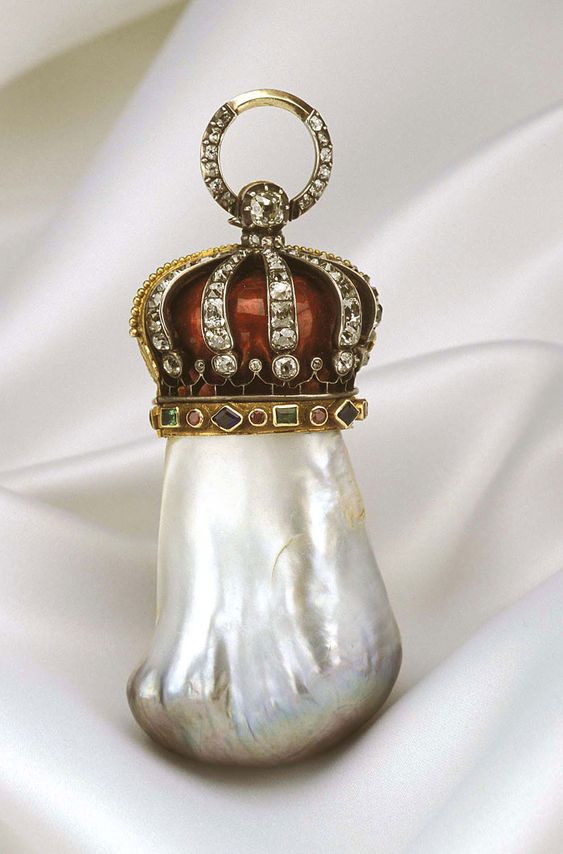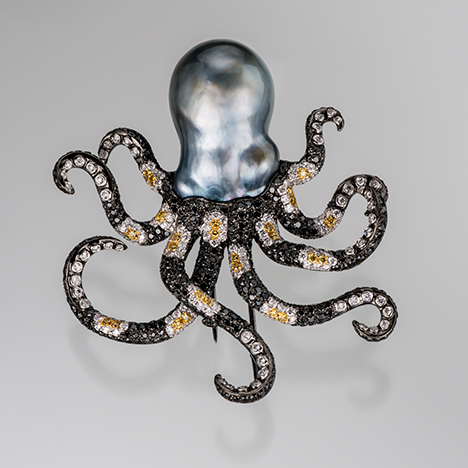
B is for... Baroque Pearls
05.02.19
Pearls are one of the most loved gemstones of all times! There are different types of pearls, and apart from that, each pearl is unique in its colour, lustre, size and shape. The shape is one of the key factors taken into consideration when assessing pearls. Today we will talk about one of the shapes that are known as Baroque Pearls.
The name Baroque derives from the Italian barocco or the Portuguese barroco - both meaning "imperfect pearl". As the name suggests these pearls are the ones that are not round, they are irregular in shape and asymmetrical.
So how do they occur? As you may already know pearls form around the microscopic irritant (usually a piece of shell or sand grain)in the bodies of certain molluscs if they are natural. In cultured pearls, it occurs as the result of the deliberate insertion of a bead or piece of tissue that the mollusc coats with nacre.
 Figure1. The picture shows the formation of the pearl. Photo credit to http://getallsolved.blogspot.com
Figure1. The picture shows the formation of the pearl. Photo credit to http://getallsolved.blogspot.comWhen an irritant, or nucleus, become attached to the shell, irregular shapes can develop. The shape of a pearl depends on the type of mollusc it grew in, and on how the mollusc reacted to the nucleus. The most common type of baroque pearls are freshwater pearls, with over 90% of these coming in various forms. However, South Sea and Tahitian pearls grow into some amazing baroque shapes because they have thicker nacre layers and spend a longer time growing in the mollusc.
Keshi pearls (tiny pearls that form spontaneously when another pearl is cultured, they grow without nucleus, they are in effect "natural" pearls) also have baroque shapes, but can be more difficult to find. The saltwater baroque pearls are more valuable than the freshwater pearls.
The interesting thing about the Baroque Pearls is that the irregular surface generally emphasizes the pearl's lustre and iridescence, making them extra shiny!

One of the most famous Baroque Pearls is The Hope Pearl. Regarded as the largest saltwater natural pearl ever discovered, the Hope Pearl is an impressive specimen. It measures about two inches by four inches and weighs almost four ounces. The pearl ranges from a greenish gold color at the bottom to a pure white at the top. This gem is in the permanent collection of the British Museum of Natural History, where any visitor to London can admire it. It also led to the increase in popularity of baroque pearl jewelry.
Baroque Pearls were highly popular in the Baroque period and later Renaissance, up to the mid-19th century and in my opinion, they never went out of fashion!

Figure 3. The modern whimsical design of this octopus brooch accentuates the 17.3mm gray baroque Tahitian cultured pearl set in black-plated 18K gold. Also featured are the 374 black diamonds totalling 3.28 carats, 26 yellow diamonds weighing 0.33 carats in total, and 169 white diamonds totalling 1.64 carats. Photo by Rodert Weldon/GIA, courtesy of Ron Greenidge abd Emiko Pearls International.




